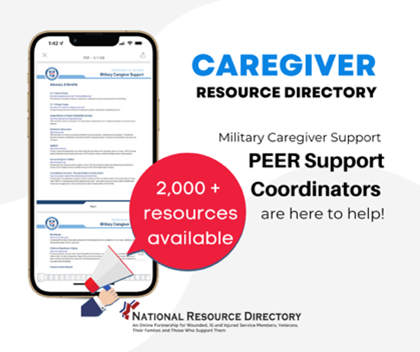Holiday Stress Toolkit for Military Families
Co-authored by Christi Garner, LMFT CYT
Stress around the holidays is a common experience. According to the American Psychological Association, 38% of adults report a significant increase in stress levels during the holidays. Military families may experience additional sources of stress related to the unique challenges of military life, including:
- Deployment of the service member
- Living far from hometowns or families
- Being unable to take leave to travel to be with friends or family
- Financial stress
Utilizing the self-care practices below, along with connecting with a Military and Family Life Counselor (MFLC), can provide much-needed support to service members and their families during the holiday season.
Tips for Navigating the Holidays During Deployment
Sometimes being with family is not possible during the holidays, even when the service member is not deployed. Feeling homesick or missing home during the holidays is very common. Here are some ways to connect with family and friends during deployment:
- Communicate as much as possible; schedule time to connect and virtually exchange presents and stories.
- Think of creative ways to continue family traditions during deployment—reenact them virtually or share through pictures.
- To support children of deployed parents, consider facilitating activities through arts and crafts, such as creating a “feelings tree.”
- Facilitate psychoeducation about mindfulness, which is linked to improve personal stress management.
- Use the Chill Drills app from Military OneSource.
Tips for Handling Holiday Financial Stress
The holidays can be an especially expensive and demanding time. Here are some tips to consider to help plan for common financial pressures:
- Set a S.M.A.R.T money goal—Write down your goal, and make sure it is Specific, Measurable, Attainable, Reasonable, and the Time you will complete it. This will help you get it accomplished.
- For more help—Find a Personal Financial Counselor here.
Food Insecurity Resources
Many military families find it difficult to access healthy meals and maintain a high level of food security. Use these resources to connect with viable resources.
- Military OneSource: 24/7 Hotline can make referrals to local food security resources by state: 1-800-342-9647
- USDA National Hunger Hotline: Referrals for food banks and other social services. 1-866-348-6479 (TTY: 711)
- Supplemental Nutrition Assistance Program (SNAP): Provides supplemental assistance for food. Commonly known as food stamps.
- Women, Infants, and Children Program (WIC): Provides supplemental assistance for nutritious foods for pregnant women, infants and children. Also provides referrals for healthcare.
- Feeding America Network of Food Banks: Resources for local food banks and food programs. Resources and eligibility requirements vary by location.
- Food Insecurity in the Military Community (Webinar Replay)
- Casual Inquiry Questions
- CORE Approach Guide
- Food Insecurity Whitepaper: Best practices to support a professional response
- Additional Food Insecurity Resource List
Tips for Holiday Stress Management
Resilience refers to the ability to handle stress when it arises and to protect oneself against future stress. Research has shown that there are many qualities that contribute to resilience, including social support, optimism, sense of humor, spirituality, self-esteem, and adaptability. Use the tips below to foster resilience in your life during the holidays.
Self-Care To Build Resilience
- Self-care also means taking care of yourself. This means eating regular meals, getting enough sleep, caring for personal hygiene, and anything else that maintains good health.
- Make self-care a priority. There will always be other things to do, but don’t let these interrupt the time you set aside for self-care. Self-care should be given the same importance as other responsibilities.
- Make self-care a habit. Just like eating one apple doesn’t eliminate health problems, using self-care just once won’t have much effect on reducing stress. Choose activities that you can do often, and that you will stick with.
- Unhealthy activities don’t count as self-care. Substance use, over-eating, and other unhealthy behaviors might hide stress temporarily, but they cause more problems in the long run.
- A few minutes of self-care is better than no self-care. Set an alarm reminding you to take regular breaks, even if it’s just a walk around the block, or an uninterrupted snack. Oftentimes, stepping away will energize you to work more efficiently when you return.
Relaxation to Build Resilience
- There are many ways to practice relaxation and help to regulate your parasympathetic nervous system. Some ideas: progressive muscle relaxation, meditation, deep breathing, being in nature.
- Plan where relaxation can fit into a daily routine. It may help to set an alarm as a reminder or connect relaxation practice with another activity. For example, practicing deep breathing for 10 minutes before bed or after leaving work on the drive home or in the driveway before going inside.
- Keep practicing even if the positive effects are small. The benefits of relaxation accumulate and grow with practice.
- Relaxation techniques not only provide immediate stress relief, but the effects also generalize to other parts of life. This means the benefits of relaxation continue to be felt long after the exercise is complete. These techniques work best when done regularly and during times of calm, rather than exclusively when stress is at its peak.
Self-Regulation Resources
Military OneSource Recommended Wellness Apps
- Mood Hacker—To help you improve your mood and enjoy life more, Military OneSource offers MoodHacker, a free resilience tool that lets you track, understand and improve how you’re feeling.
- Breathe2Relax—Trains you on the “belly breathing” technique that has proven benefits for your overall mental health. Use the app’s breathing exercises to learn and practice on your own or as part of a stress management program supervised by your health care provider.
- Chill Drills—Chill Drills is a free collection of simple audio mindfulness exercises to relax the body and mind.
- Virtual Hope Box—The app contains simple tools to help users with coping, relaxation, distraction and positive thinking using personalized audio, video, pictures, games, mindfulness exercises, activity planning, inspirational quotes and coping statements.
- Breathe, Think, Do: Sesame Street—Laugh and learn as you help a Sesame Street monster friend calm down and solve everyday challenges. This app helps your child learn Sesame’s Breathe, Think, Do strategy for problem solving.
Stress Relief Resources
- Basics of Belly Breathing
- Veterans Employment Toolkit: Deep Breathing
- Veterans Employment Toolkit: Progressive Muscle Relaxation
- Life in Balance: Stress Relief Webinar
- Mindfulness Meditation Self Care Strategy
- The important part of self-care is not so much what you do—it’s just that you do it. Many of these strategies can be fostered in non-medical counseling. Contact Military OneSource to find your local Military and Family Life Counselor by calling 800-342-9647 or contracting your installation’s Military and Family Support Center. Or learn more online here.
Sources
- Dunham, T. (2022). “When the Tinsel Gets Tangled: How to Cope with Holiday Stress.” DoD Psychological Center for Excellence, Health.mil.
- Rice, V. J., Liu, B., Allison, S. C., & Schroeder, P. J. (2019). Mindfulness training offered in-person and in a virtual world—weekly self-reports of stress, energy, pain, and sleepiness among US military active duty and veteran personnel. Mindfulness,10, 1815-1827.
- Grafton, E., Gillespie, B., & Henderson, S. (2010) Resilience: the power withing. Oncology Nursing forum (Vol. 37, No. 6, p. 698).
- Rash, J. A., Matsuba, M. K., & Prkachin, K. M. (2011). Gratitude and well‐being: Who benefits the most from a gratitude intervention?. Applied Psychology: Health and Well-Being, 3(3), 350-369.
- Esch, T., & Stefano, G. B. (2010). The neurobiology of stress management. Neuroendocrinology letters, 31(1), 19-39.
 Christi Garner, LMFT CYT, is a Learning & Development Director at Magellan Federal. Christi has served in the Military and Family Life Counseling (MFLC) program since 2016 in various roles, including CONUS and OCONUS MFLC, Regional Supervisor, and training coordinator. Prior to MFLC, Christi dedicated over 15 years as a trauma therapist, clinical trainer, and adjunct instructor. Christi is a military spouse who is passionate about helping other service members and families.
Christi Garner, LMFT CYT, is a Learning & Development Director at Magellan Federal. Christi has served in the Military and Family Life Counseling (MFLC) program since 2016 in various roles, including CONUS and OCONUS MFLC, Regional Supervisor, and training coordinator. Prior to MFLC, Christi dedicated over 15 years as a trauma therapist, clinical trainer, and adjunct instructor. Christi is a military spouse who is passionate about helping other service members and families.
 How does EFMP work?
How does EFMP work?  Caregiver Resource Directory (CRD)—The CRD is designed to help empower military caregivers with information about national and local resources and programs specifically for them. Topics include helplines, advocacy and benefits information, career transitions and employment, military caregiver support, children’s needs, education and training, financial support, rest and relaxation, and more.
Caregiver Resource Directory (CRD)—The CRD is designed to help empower military caregivers with information about national and local resources and programs specifically for them. Topics include helplines, advocacy and benefits information, career transitions and employment, military caregiver support, children’s needs, education and training, financial support, rest and relaxation, and more.